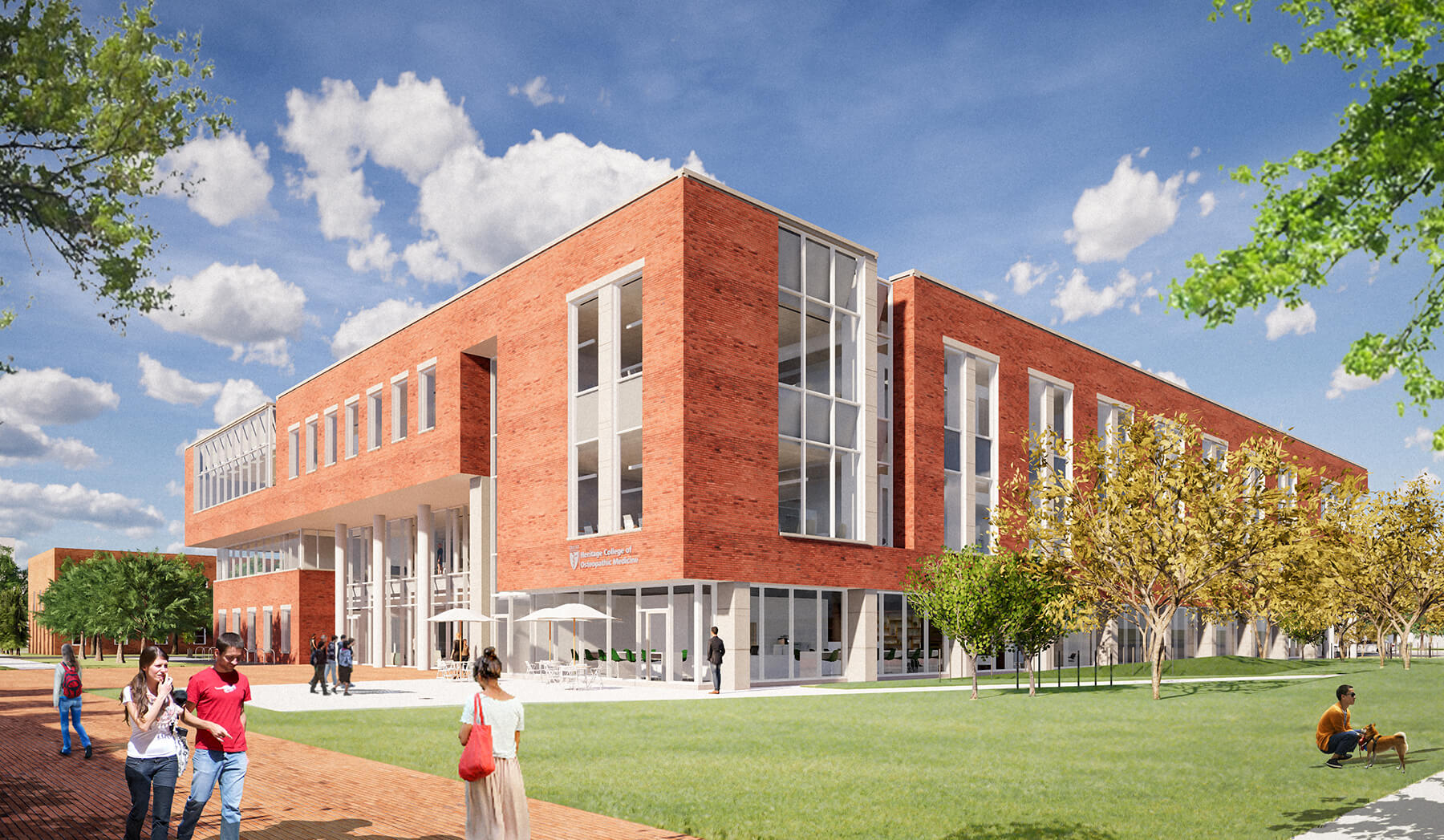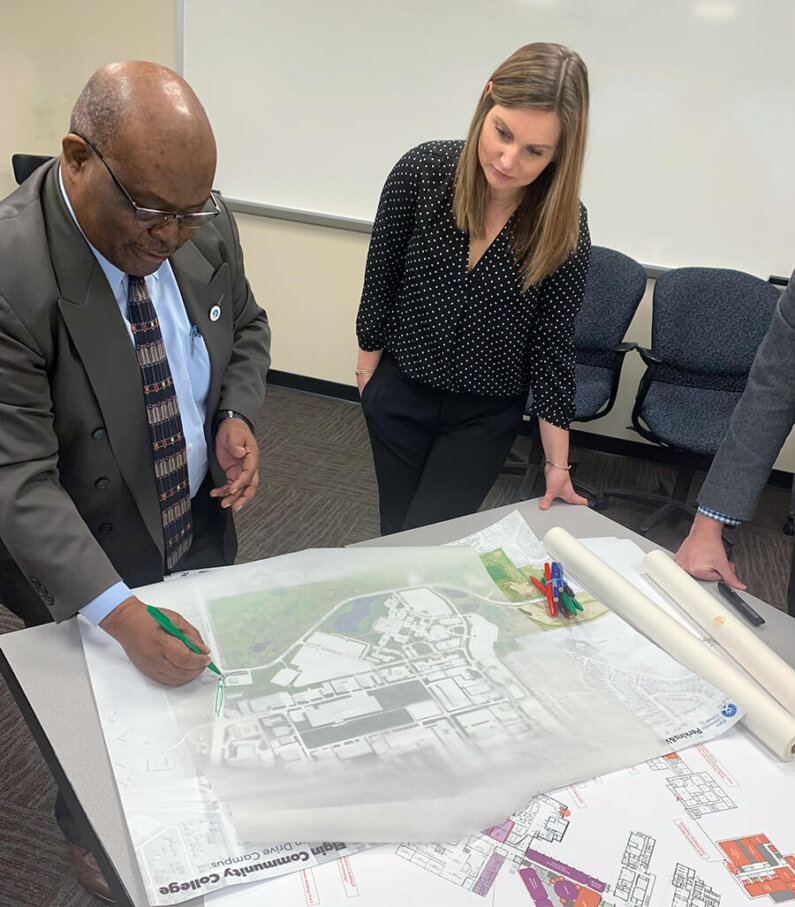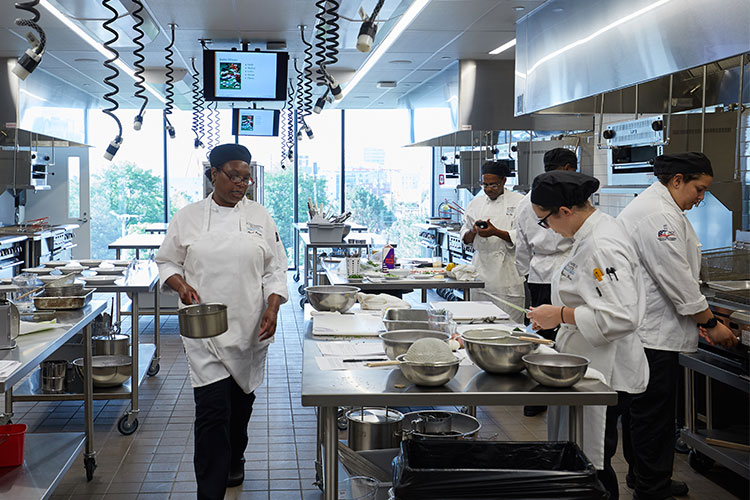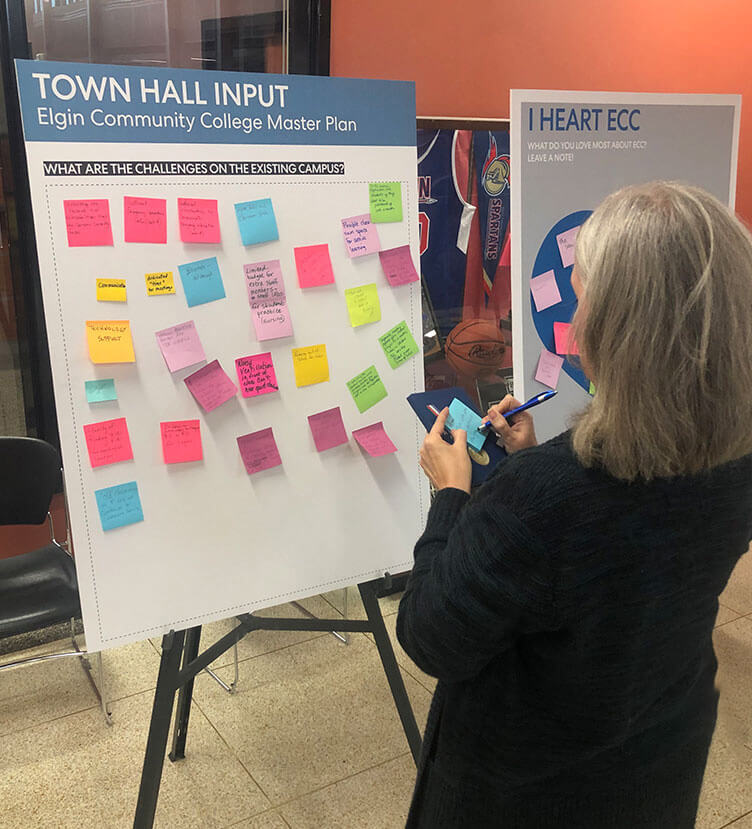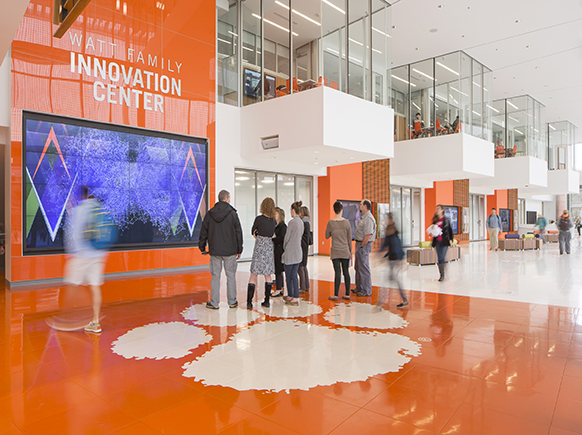1. Integrate Well-Being into Curriculum and Design
Multiple studies – like this one from the American Medical Association – have shown that the rigors of medical education often cause students to develop unhealthy lifestyles and habits. Evidence also suggests that medical professionals who are themselves healthy are more likely to counsel their patients to embody these same practices. In short: healthier students make healthier doctors, who in turn make healthier patients.
Recognizing this, senior leadership at Ohio University’s Heritage College of Osteopathic Medicine (OU HCOM) empowered their faculty to re-tool their curriculum to serve as a foundation for the well-being of its students and faculty. This revamped curriculum established time for self-care and renewal and facilitated a self-directed method of learning to allow for pedagogical flexibility and evolving processes.
Perkins&Will and DesignGroup collaborated with HCOM faculty to develop a mix of spaces that would nurture this new focus on emotional intelligence, well-being, and clinically-integrated teaching in a new home on OU’s campus. The new facility incorporates yoga studios, mindfulness rooms, wellness areas, and fitness centers for mental health breaks planned throughout the day. These spaces are infused with biophilic design details to better connect occupants with the natural environment through the use of direct and indirect light, including a trellis-designed skylight atrium. Students and faculty are now participants in a community of wellness, and have the spaces to embrace it beyond the classroom.
By putting well-being into practice, the school is cultivating students who are adaptable, team-based, compassionate, and empathetic – no matter which direction their careers might take them.
